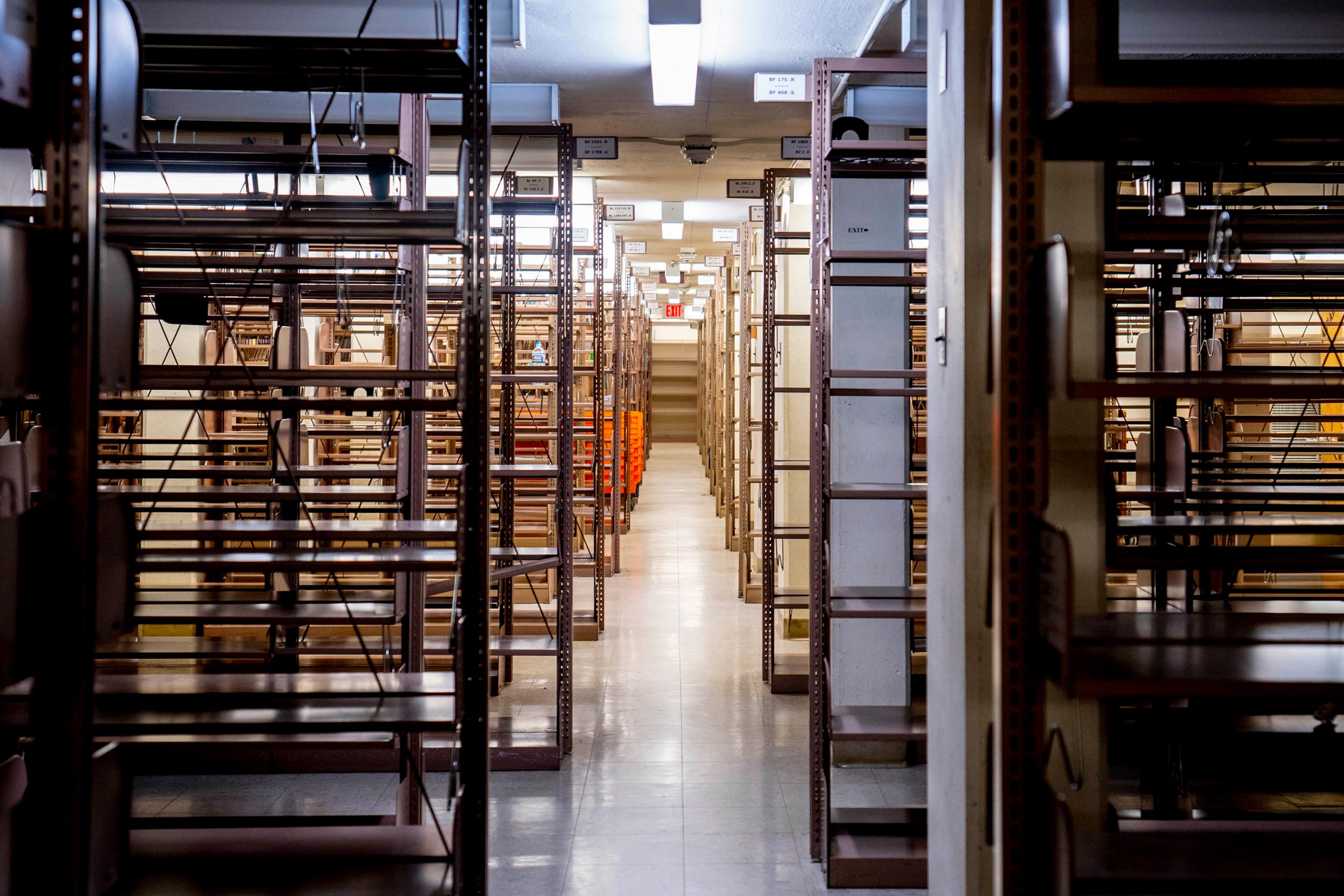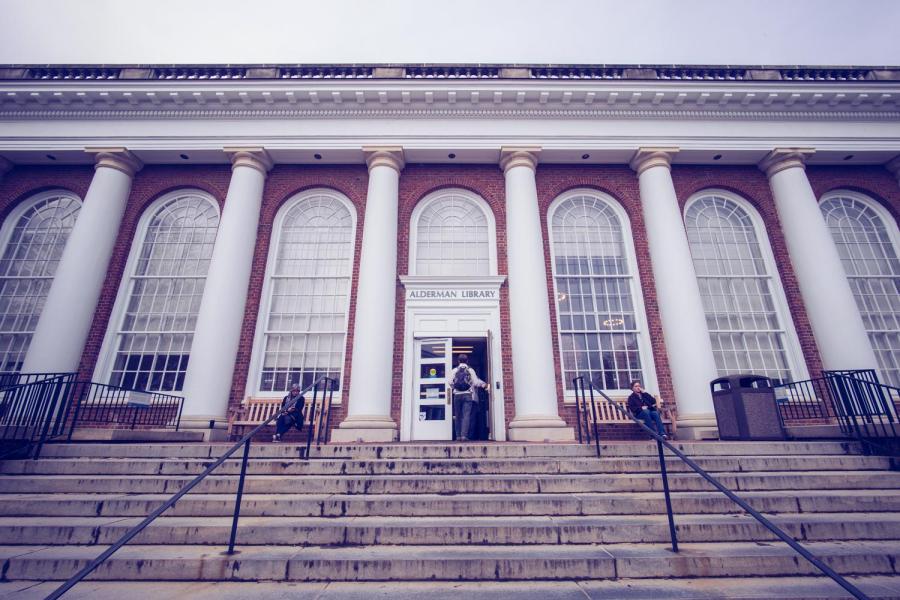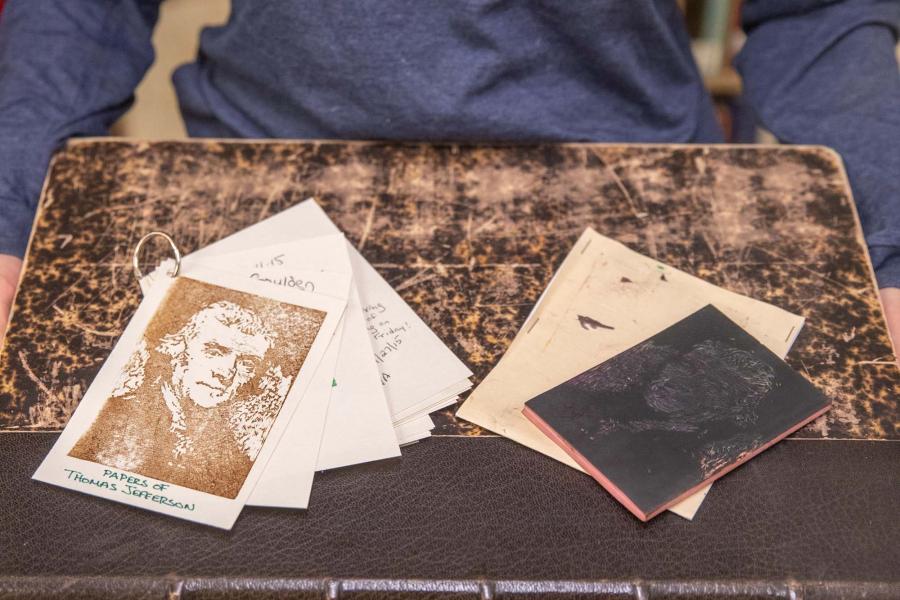This fall marks the transition period in the preparations to close the University of Virginia’s central Alderman Library for much-needed renovation and expansion.
That means 1.7 million books and materials are being moved from Alderman to nearby Clemons Library or the Ivy Stacks, the off-site shelving facility located a mile from central Grounds.
The library books are on the move. Everything should be moved by December in anticipation of Alderman closing in May for about three years.
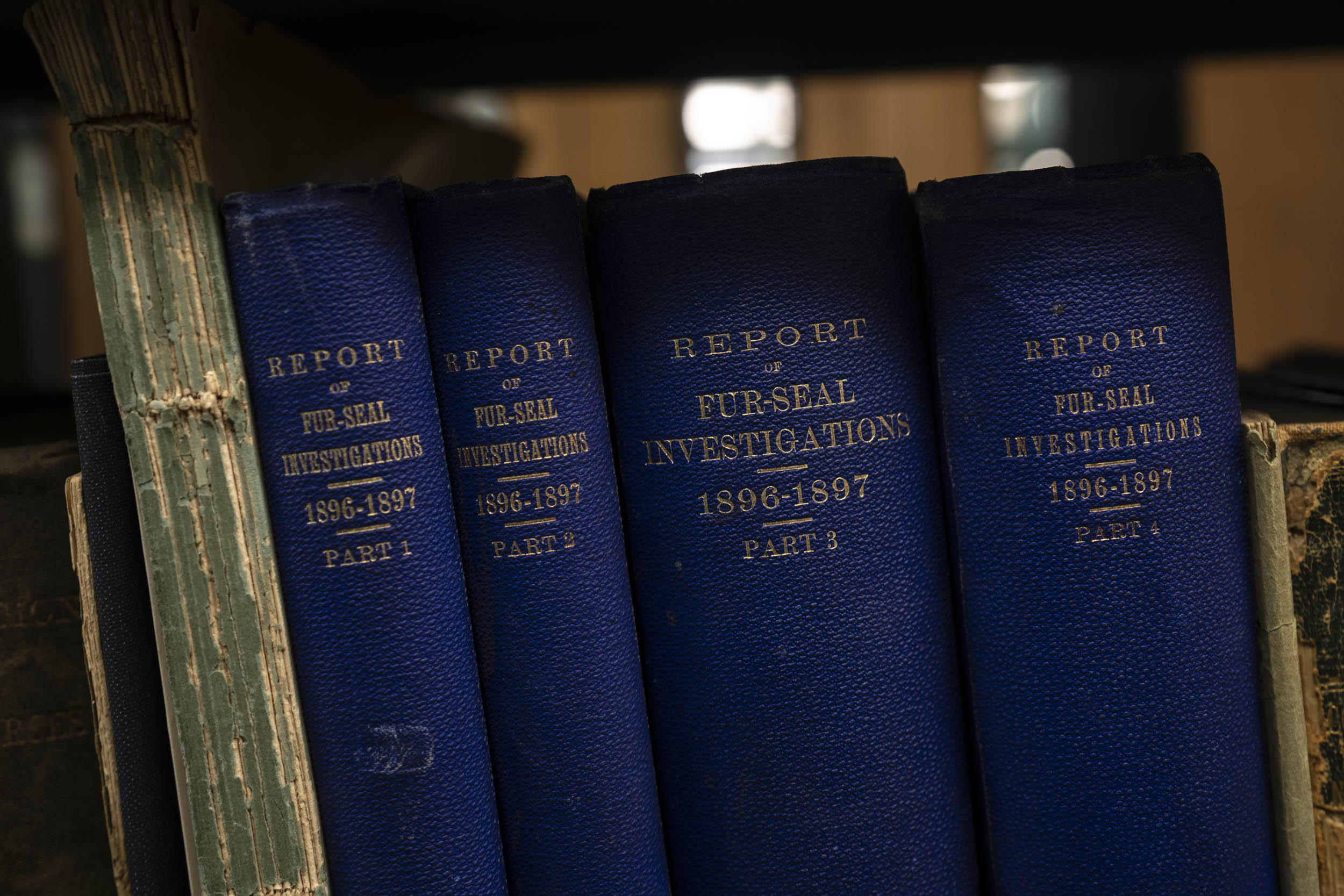
Don’t worry, though, library patrons and bibliophiles. All UVA Library collections will remain listed and available via the library’s online catalog, Virgo.
Books and materials that are considered high-use and circulate regularly have been moved to Clemons Library’s reopened first floor, renovated last year to accommodate about 500,000 volumes with the installation of movable shelves and more study spaces.
“All materials currently in Alderman will remain available for library users during the renovation, either in Clemons Library or by request from Ivy Stacks,” said Esther Onega, director of Alderman Renovation Planning, Stacks and Delivery.
The books and documents going to Ivy Stacks will be accessible by request. The library will increase the rate of deliveries to get them to patrons more quickly, usually within 24 hours.
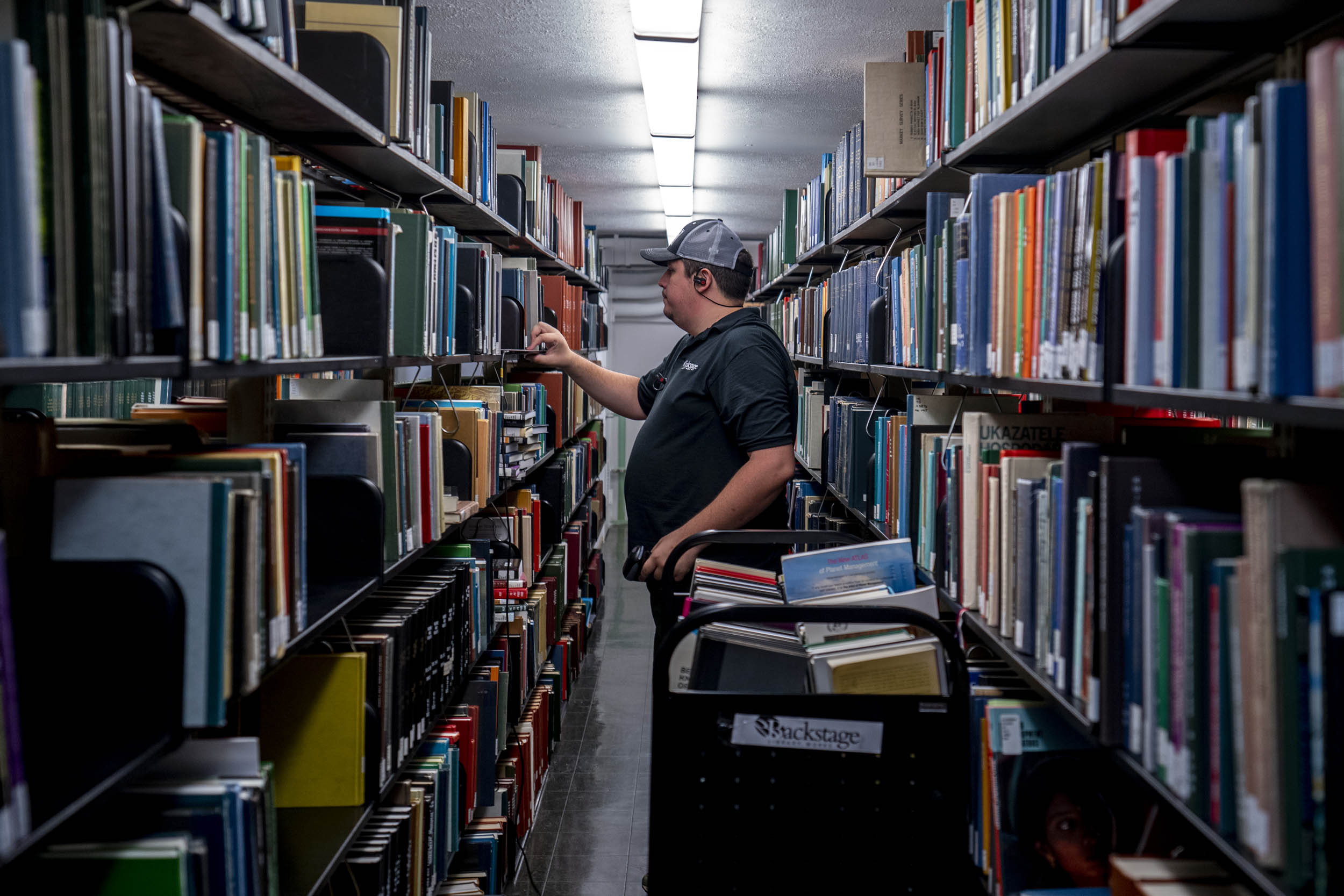
Alderman, which opened in 1938, is in desperate need of upgrades for safety, accessibility and space utilization, and the General Assembly approved funding for the project earlier this year. UVA selected HBRA Architects and construction management firm Skanska to work on the project.
Some extra workers and the companies, Backstage Library Works and Overton & Associates, are helping with this huge job.
Alderman Library opened with a print collection of more than 300,000 books, and the stated capacity to hold double that number. Now the collection has reached about 1.7 million items that have to be moved.
During this transition and the renovation, the library will continue to acquire new books, as always. New volumes in the appropriate disciplines will join the humanities and social sciences collection in Clemons.
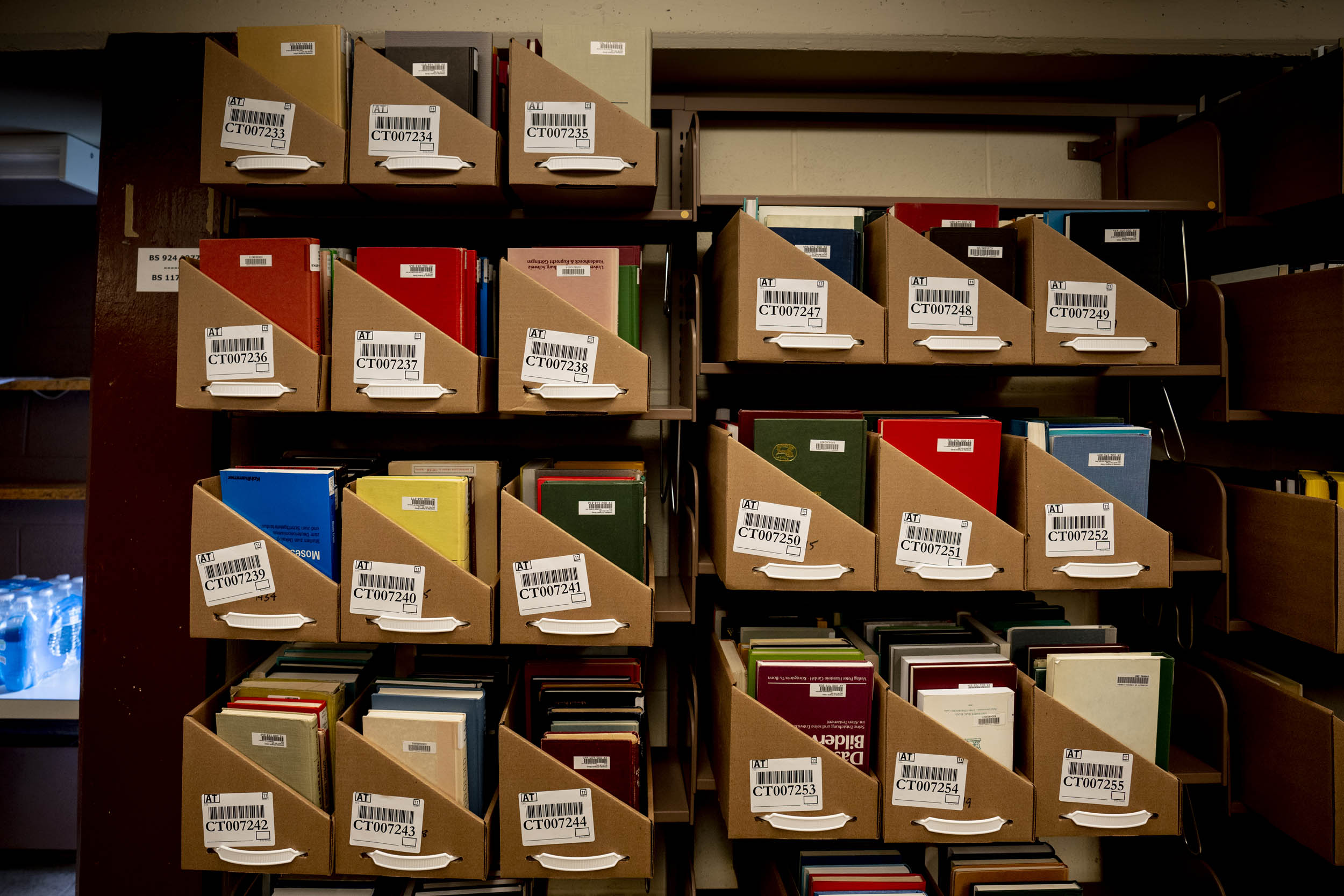
By call number order, books going to Clemons were moved first. The rest of the items are headed to the Ivy Stacks, most of which will be returned to Alderman after renovation.
The books are put into open cardboard boxes called “trays” with the call numbers and corresponding bar codes visible for scanning and shelving.
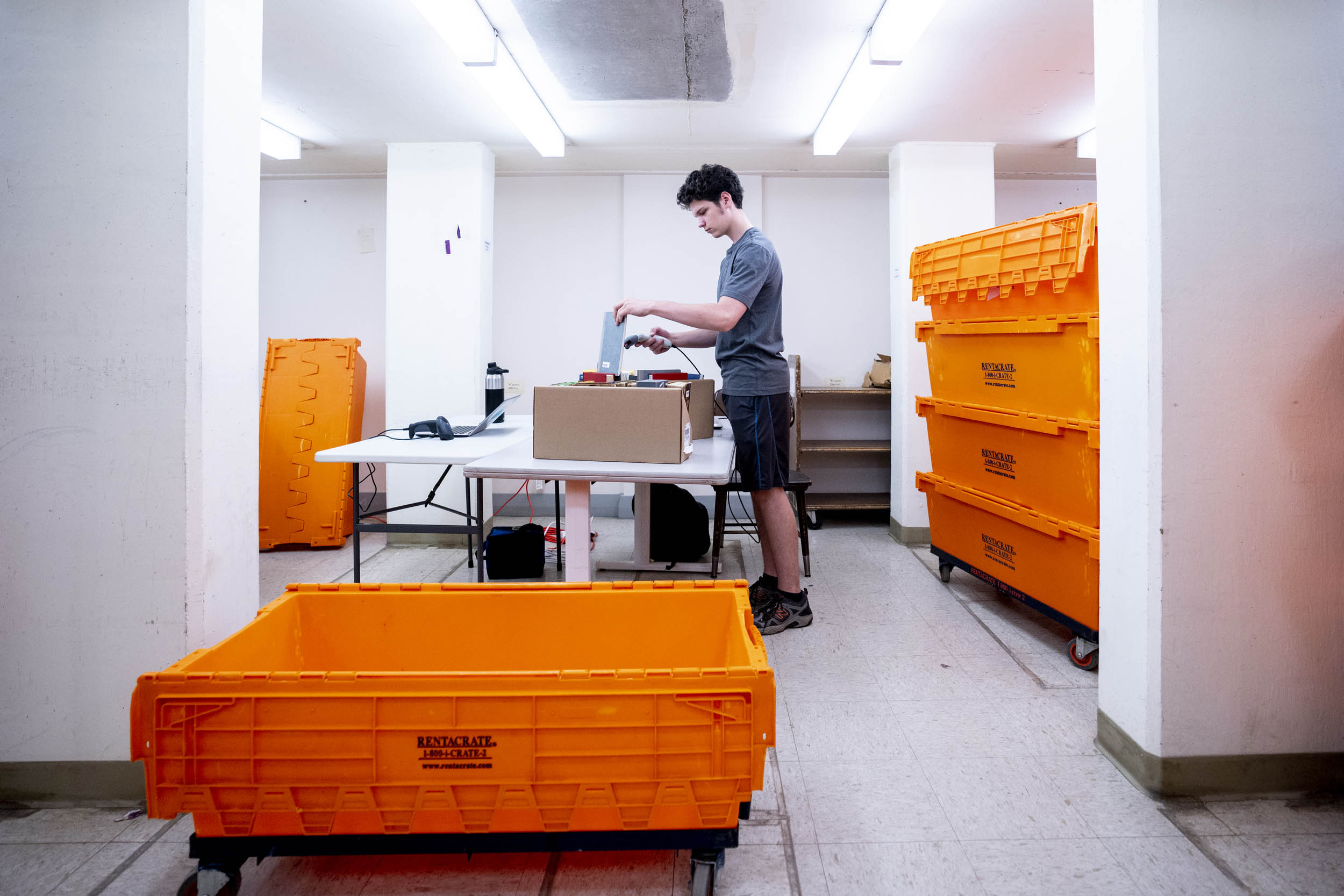
When the books are arranged in the trays and scanned, they are packed into 5-cubic-foot stackable crates for moving. The crew has used 550 crates.
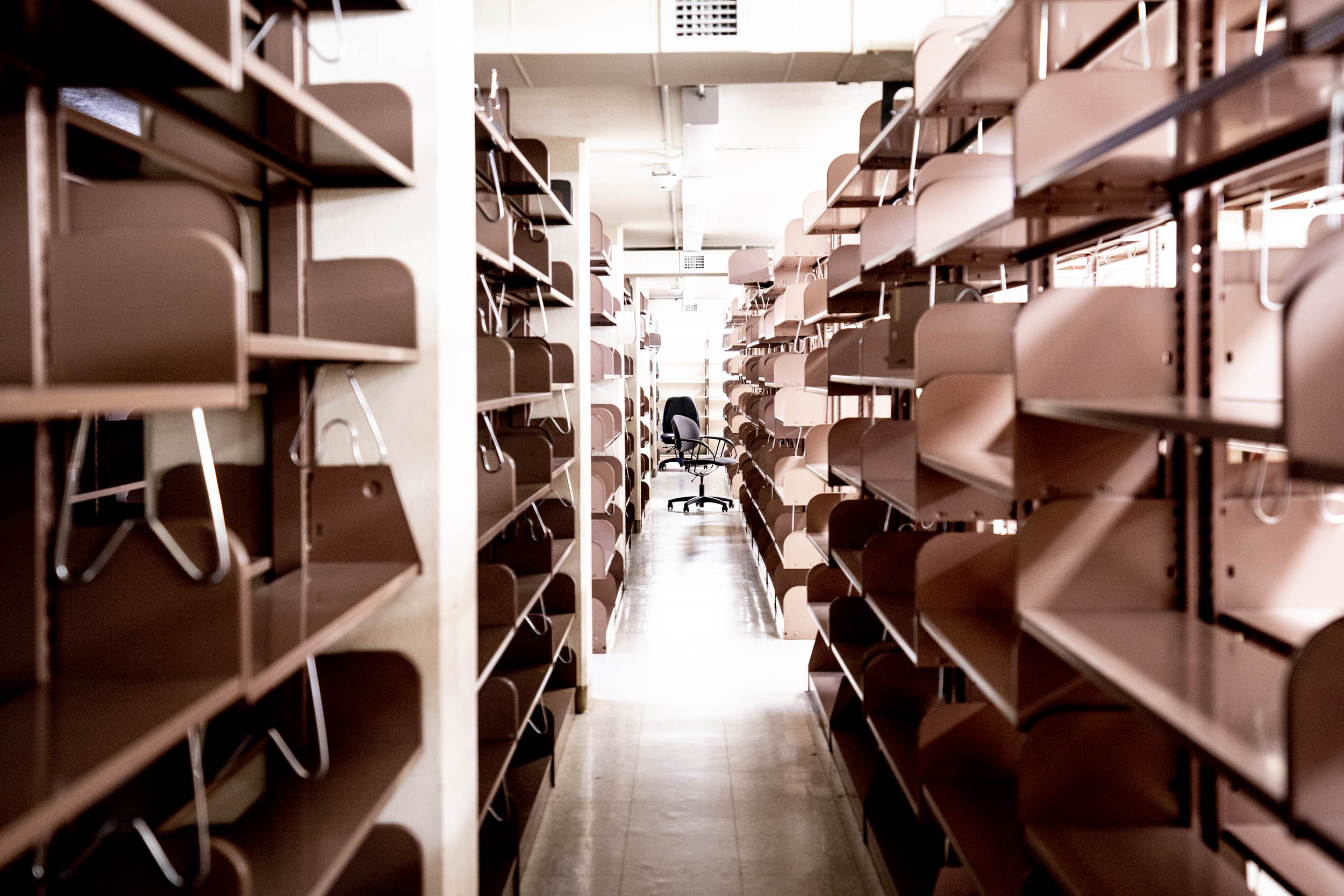
The renovation will create better facilities for study, research and social interactions, providing a much-improved environment for students, faculty and scholars in the humanities and social sciences.
Some historic areas, such as Memorial Hall and the McGregor Room, will be retained and restored.
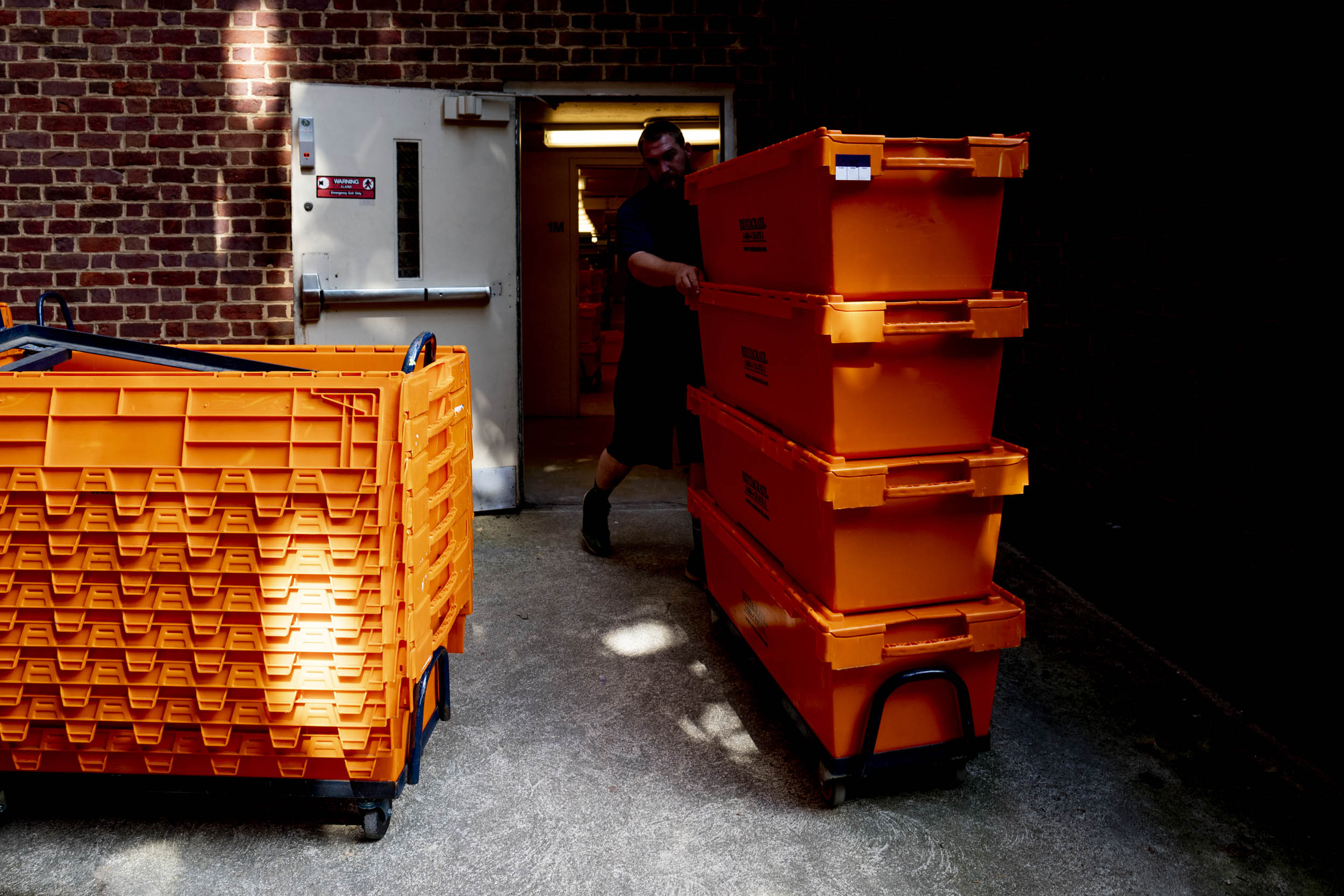
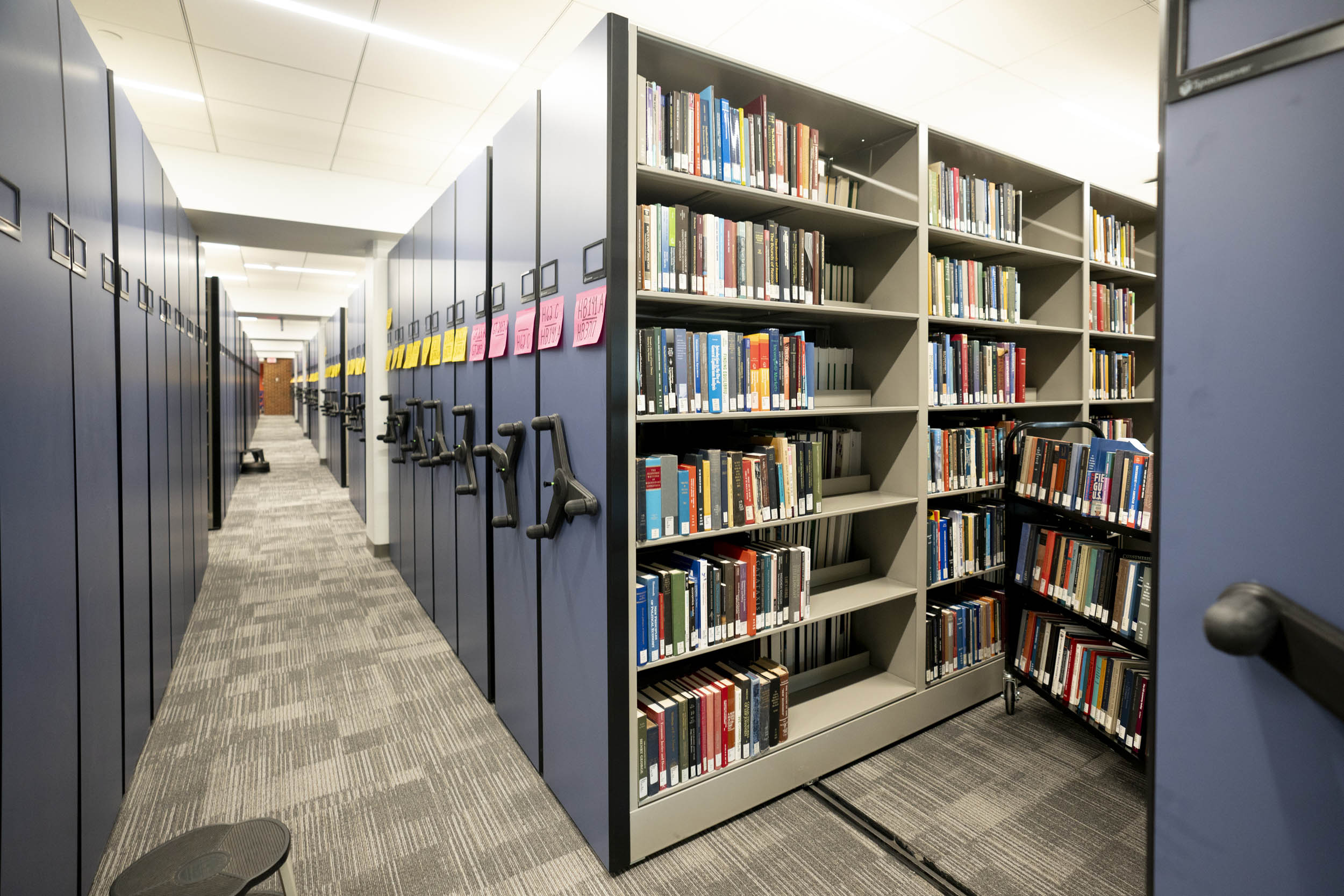
Clemons Library reopened this summer, with the first floor renovated to accommodate about 500,000 books in compact shelving. In addition, study areas were refurbished with tables and booths. HVAC systems were replaced and bathrooms also renovated.
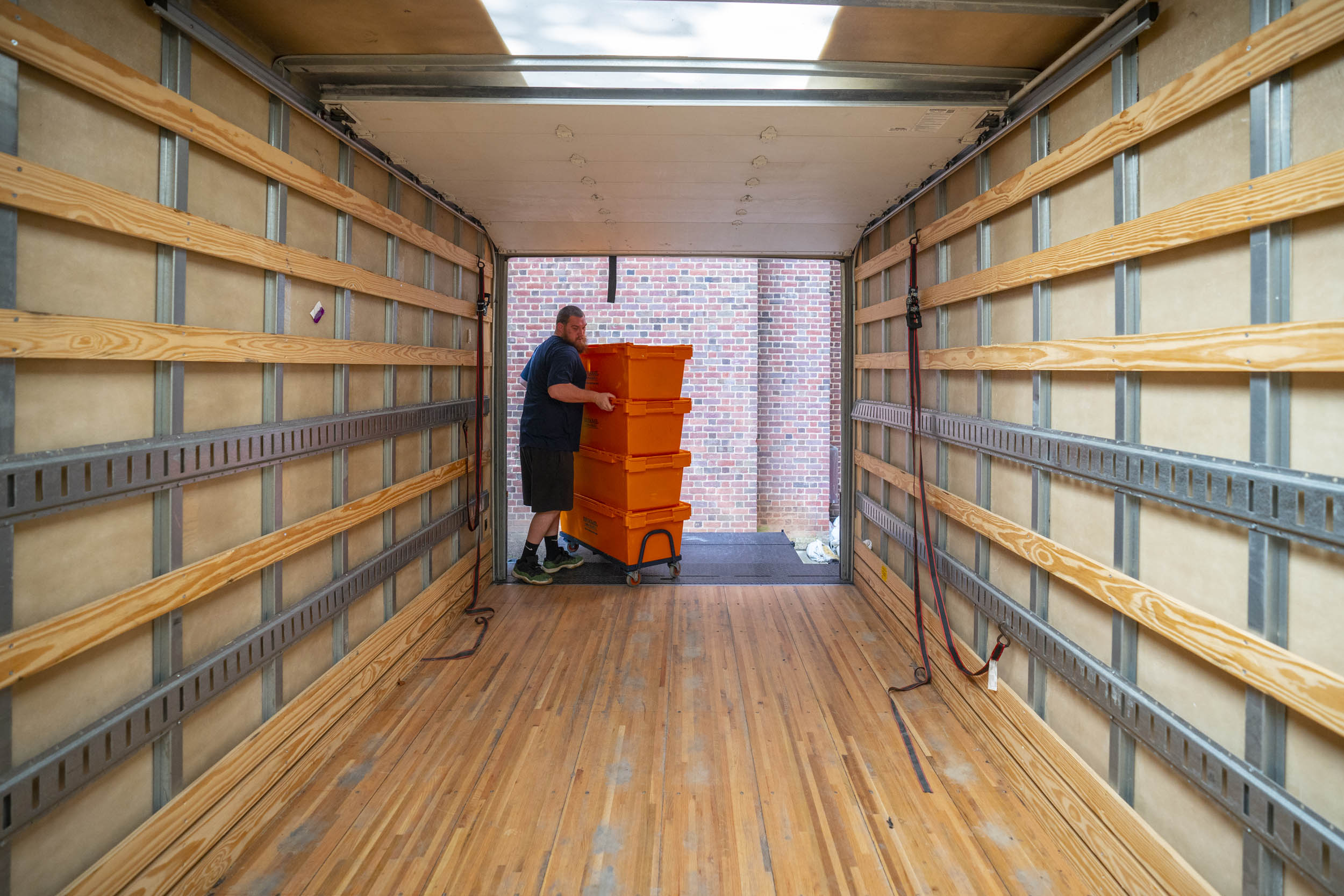
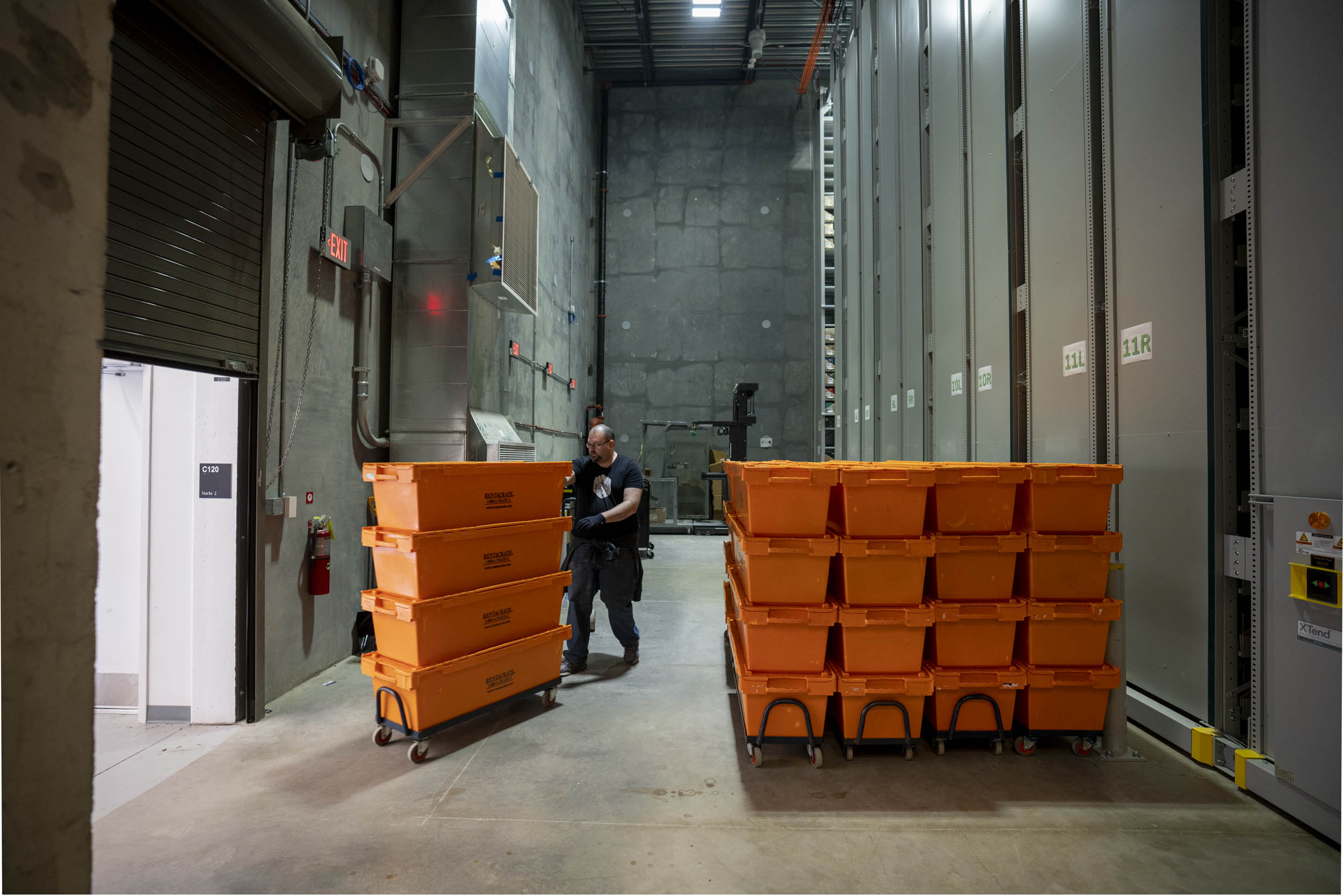
Ivy Stacks is described online as “a high-density storage and retrieval facility.” It holds more than 1 million books and other materials. It was expanded in 2017, doubling its storage space in anticipation of the Alderman renovation. The facility is outfitted with solar panels to reduce its energy footprint.
All of the materials housed there are available to be checked out through Virgo, the library’s online catalog.
The workers push carts of crates and boxes from the outer offices into the vast shelving room, where the cool air brings relief compared to the hot summer day outside. The optimum temperature for books to live in is about 55 degrees.
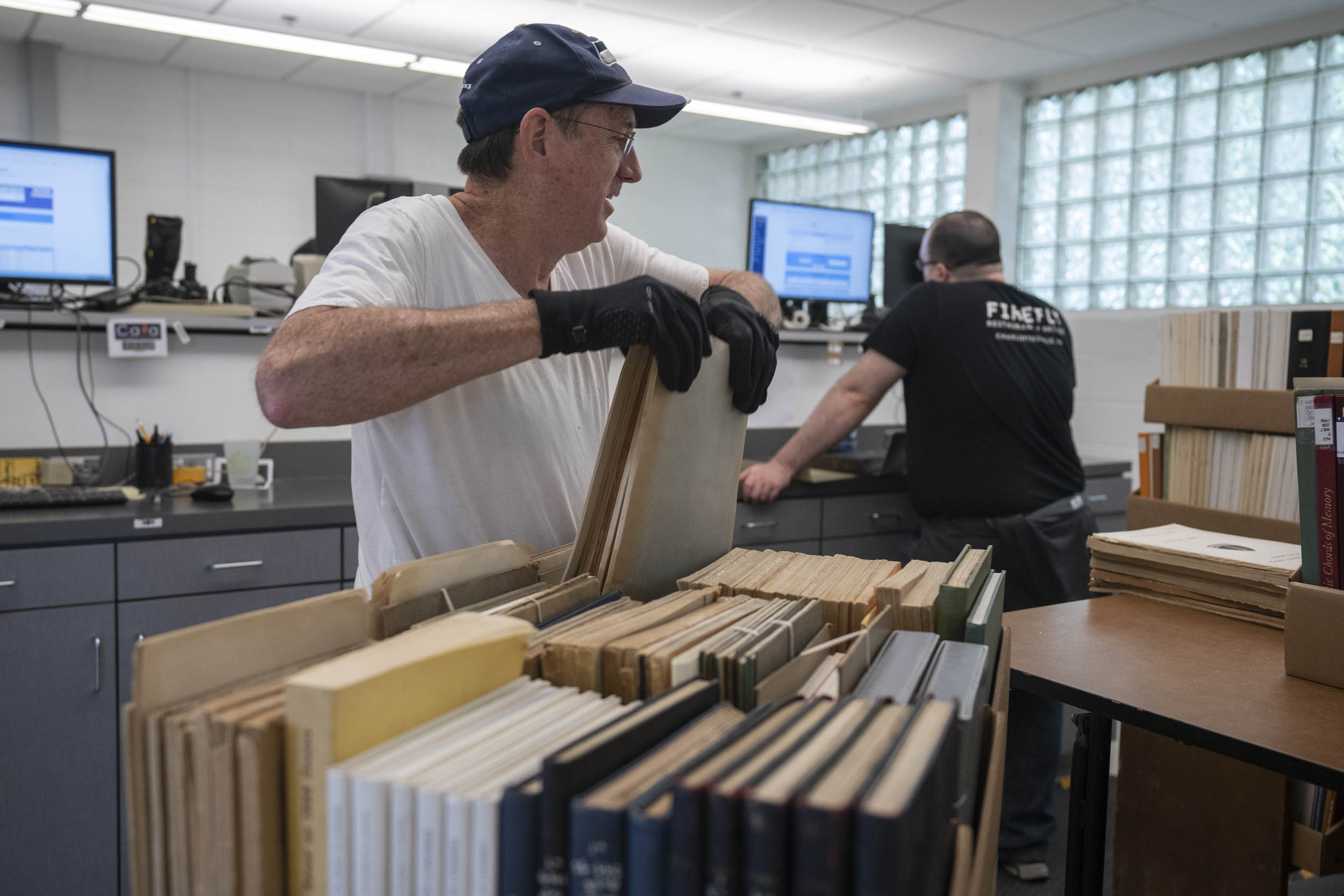
Usually, only three employees work at Ivy Stacks, but with the migration of books and other items from Alderman, an Alderman employee is on loan to Ivy Stacks, and three temporary workers have been hired to get the job done, moving the books to the shelves. All in all, six workers were on the Clemons team and 18 are working on the Ivy Stacks team.
The Ivy Stacks also has an on-site reading room available for researchers who might want to view many books at one time.

This concrete building houses a varied assortment of obscure documents, centuries’ worth of records, scores of topographical maps, obsolete technology – remember LaserDiscs? – as well as books that haven’t been checked out in 50 years or more.
UVA is a designated federal depository library. Onega said that many documents are released online instead of in print now, and the demand for the older physical documents isn’t as high as it used to be. Printed government documents are being moved to Ivy Stacks.
UVA is completing an agreement with University of North Carolina to share the retention of these materials.
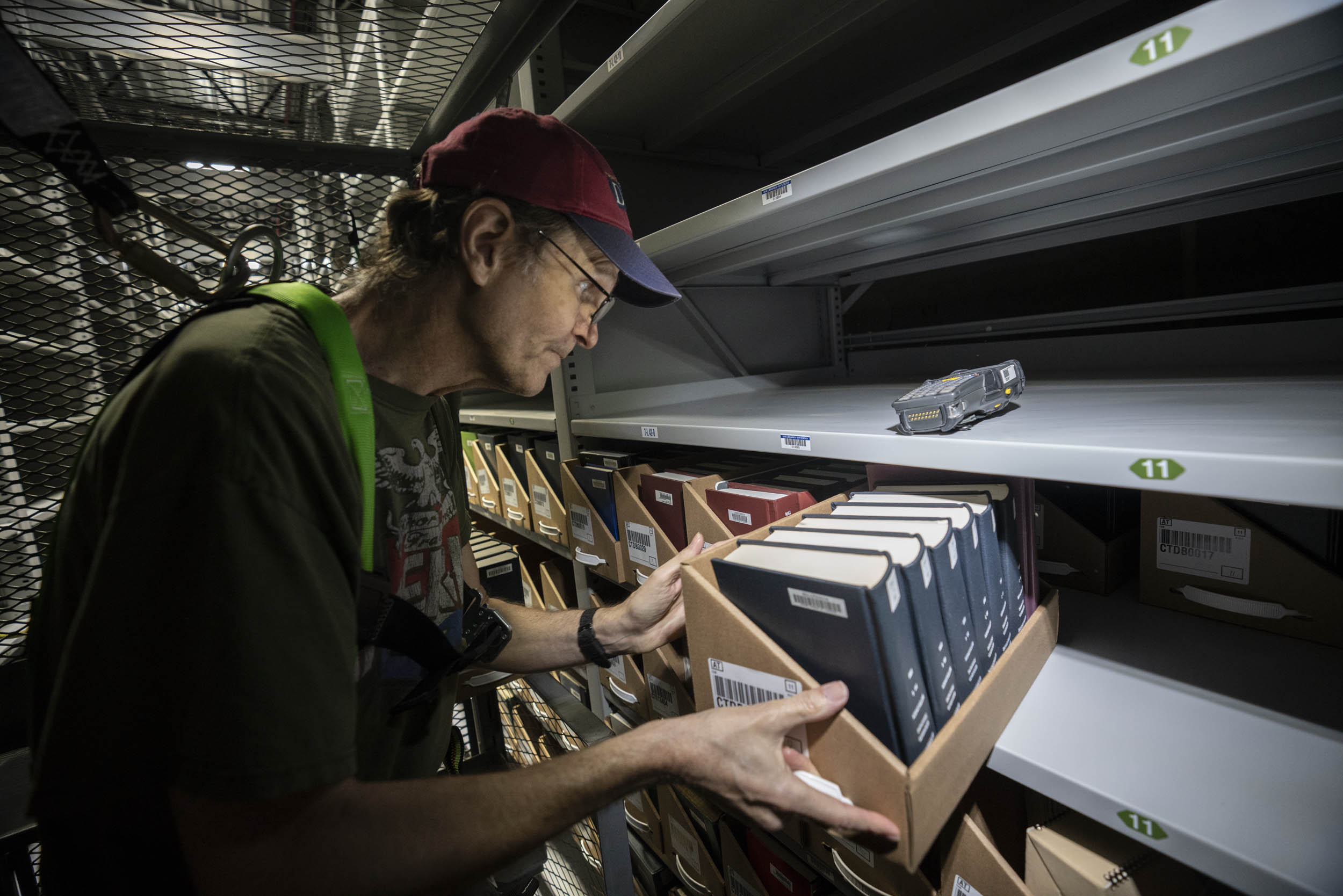
Stacks manager Steve Bartlett and his hardy band follow a methodical process in shelving books and other items in Ivy Stacks. Most are being moved to easily reachable, eye-level shelves, while some others are being relocated to higher ones.
The shelves, which stretch 200 feet long and tower up to 30 feet, move electronically, saving the space of aisles between rows. They are equipped with laser detection and safety lights, so the shelf unit will stop moving if anything is detected in the aisle.
Materials stored up higher, such as large volumes of journals from long ago, get loaded onto a vehicle called an “order picker” that can only be driven by those with proper training and licensure, including Bartlett.
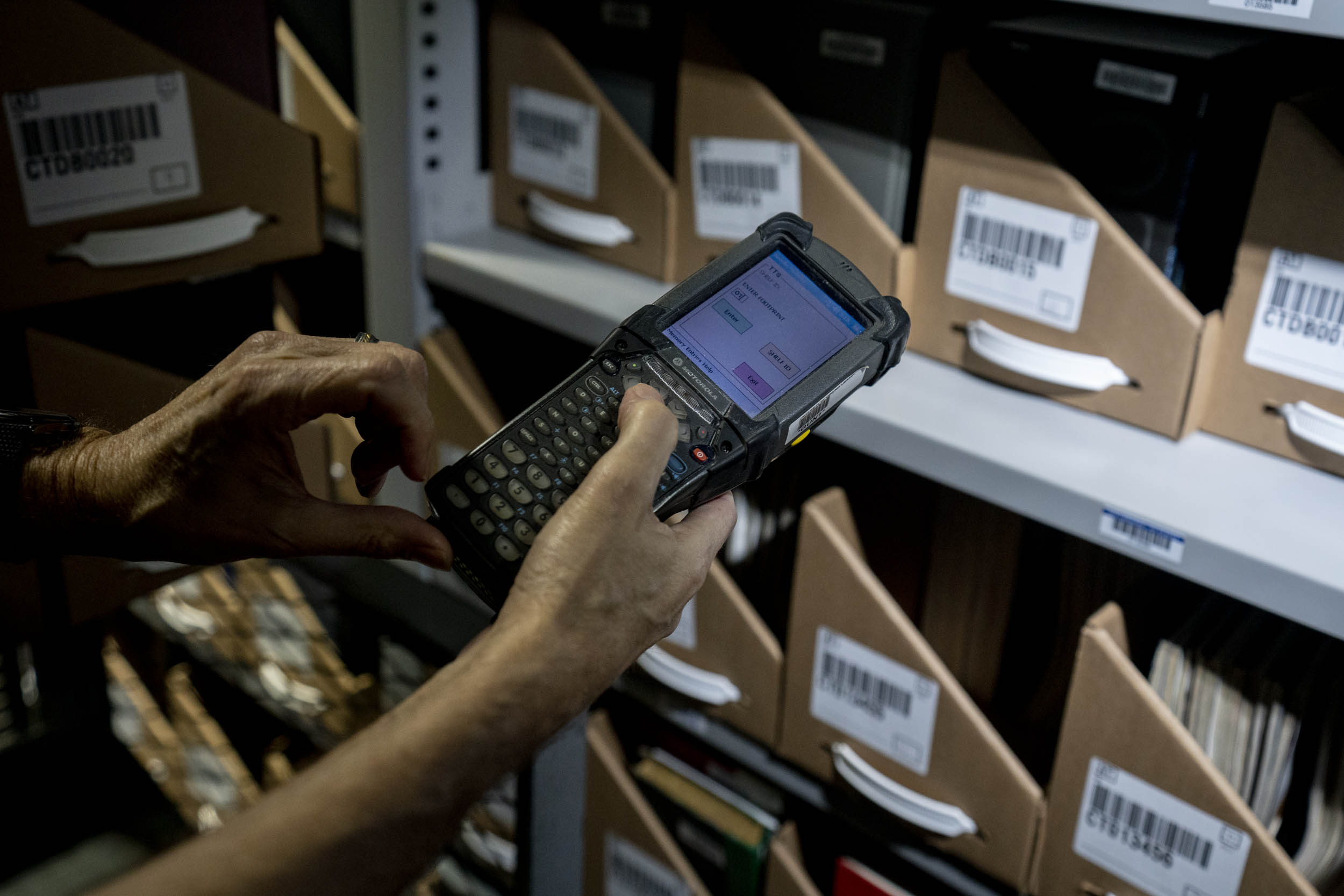
Each section of shelving, called a “ladder,” has about 25 rows, depending on the sizes of the books that will sit there.
Among the collections are years of microfiche, actual newspapers and LPs. Bartlett’s favorite discovery, because he’d never seen anything like them, he said, were some of the glass negatives of photos made by Rufus W. Holsinger from the late 1880s to 1930.
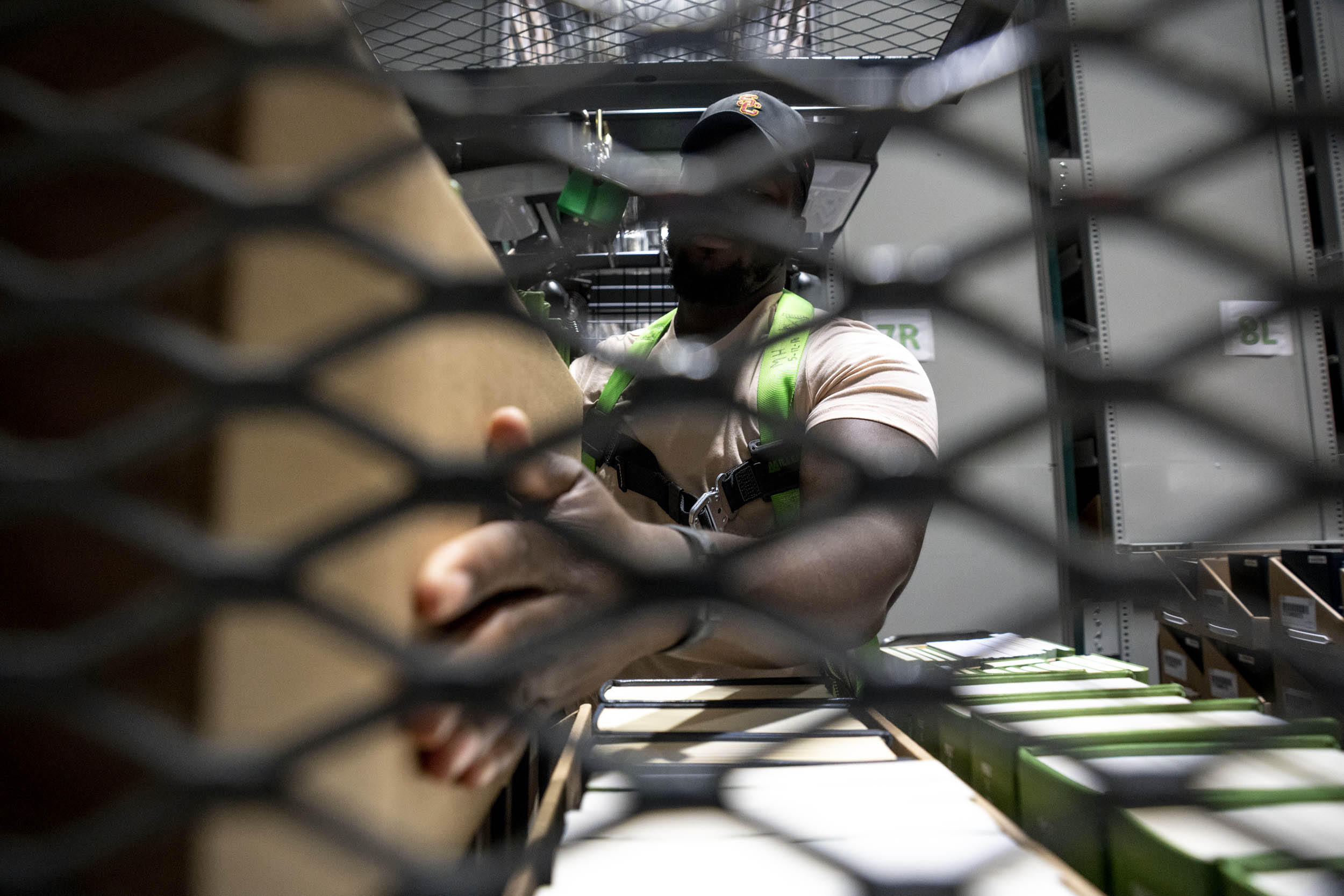
Library coordinator Matt Harmon, suited up with a special harness, drove down a narrow aisle and ascended to the upper shelves to unload the cargo, which takes only a few minutes. The machine has a cage-like platform instead of a “cherry-picker” arm.
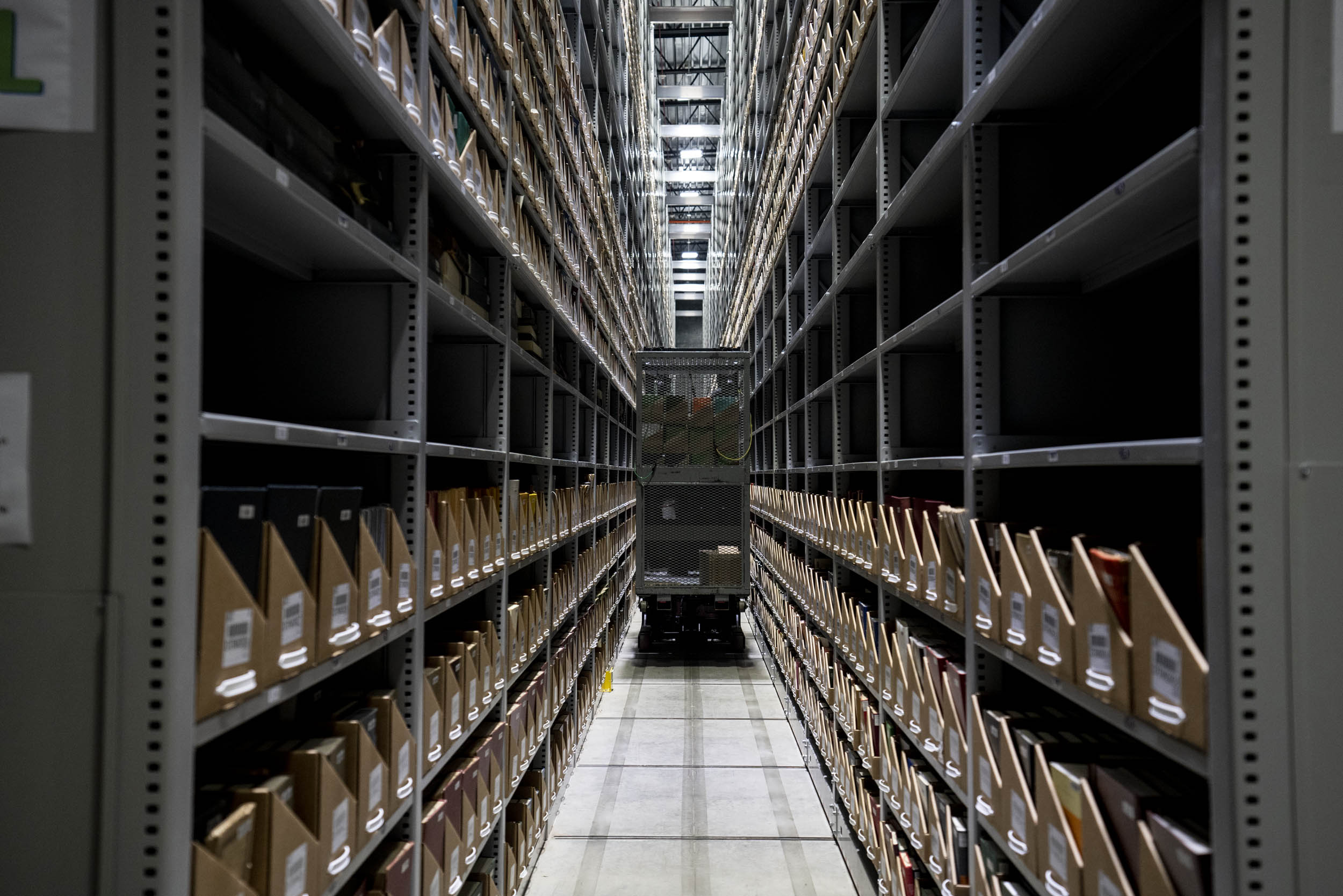
Media Contacts
University News Associate Office of University Communications
anneb@virginia.edu (434) 924-6861
